54 Brunswick Street West (previously 5, and the Denmark Tavern)
The Denmark Tavern first appears in the Brighton & Hove street directories at number 5 Brunswick Street West in 1864 and the last time it is listed as such is 1897.
The building is on the west side of Brunswick Street West and has been recorded by some commentators as having been located where the current number 52 is. Evidence suggests, however, that the actual site is the building currently numbered 54.
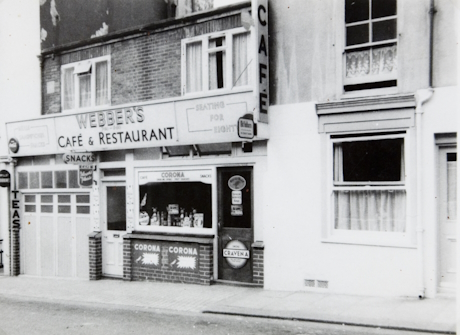
Image 1: Number 52 Brunswick Street West, late 1950s from the James Gray Collection, which states that this was the site of the Denmark Tavern (note the ground floor window and door of number 54 on the right of the picture)
The building
In both the street directories and censuses, beside number 5 an additional building is listed, number 5½ or 5a. The census for 1871 lists this as an ‘outbuilding’ to the Denmark Tavern; it is, however, listed as a residential building and is situated at the rear of number 5. The Ordnance Survey map for 1875 clearly shows a passageway on the north side of the building leading to a courtyard and the building, 5½, located to the rear of number 5.
Image 2 shows the arrangement of the buildings in 1875.
The census of 1911 states that number 5 had five rooms and 5½ three rooms although the number of floors of the smaller building is not entirely clear. In the revised numbering of the street in 1925 number 5 became number 54 whilst number 5½ was renumbered 56.
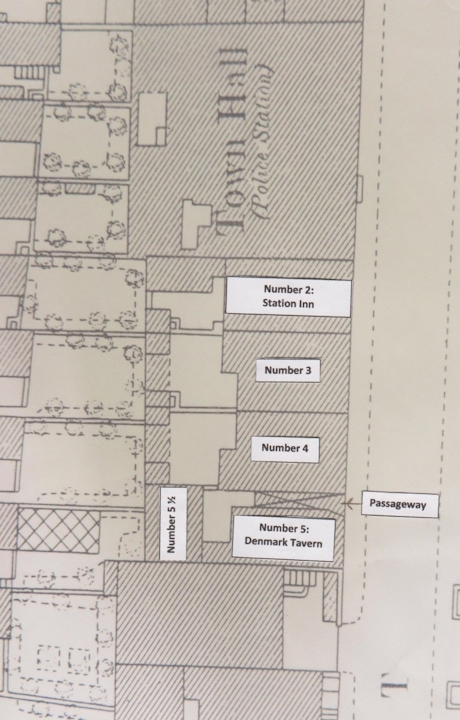
Image 2: Ordnance Survey map 1875, showing location of various buildings
On viewing the facade of the building today it looks somewhat similar to numbers 58 (old number 4) and 60 (old number3), however, evidence shows that this was not always the case. The main differences in the facade are found in the parapet, with houses 58 and 60 showing a uniform approach to this, whilst number 5 shows a very plain parapet. Architect drawings from 1992 (image 3) show changes made to the facade and give an indication as to the original appearance of number 54. A door to the right of the passage originally provided direct entry into the ground floor space; this is the door referred to in image 1.
Access to the upper floors was via the passageway which led to a door halfway down. The ground floor doorway was concealed in alterations made in the 1990s and is illustrated in the architect’s drawing, with traces of the ‘ghost’ outline of the door still visible. The size of the ground floor window was also altered, making it smaller to match the windows on the floors above.
Image 4 clearly shows the passageway and outline of the original ground floor door.
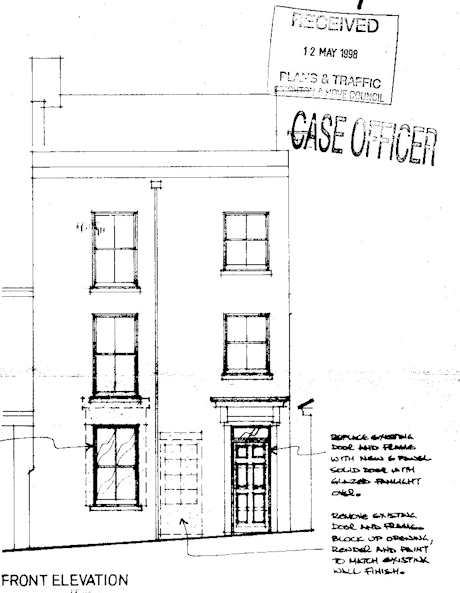
Image 3: Proposed changes to the façade of number 54, circa 1996. Note the alterations to the ground floor doors and window
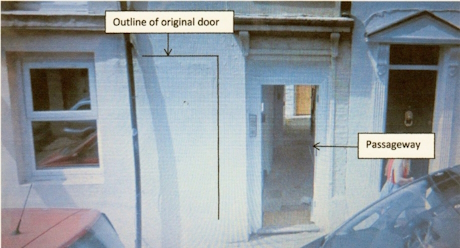
Image 4: view of the passageway and ‘ghost’ outline of the original door to the ground floor
(Google maps 2018)
A Beer House
Brief note on legislation
The Beer Act of 1830 (1Wm.IV c.64) is often considered to have been an attempt by the Duke of Wellington’s government to create a free market in beer.
The act removed beer houses from existing controls whereby licences were granted by local justices. Beer houses were now controlled by the excise department and for a fee of two guineas and compliance with a few basic conditions beer house licenses were granted automatically to any rate payer. The main restriction imposed on beer houses by the 1830 act was that they were required to close between 10pm and 4am on weekdays, and on Sundays could only open from 1pm to 3pm, and 5pm to 10pm.
A key objective for the 1830 Beer Act is generally considered to have been an attempt at weakening the position of major brewers who, through ownership of many public houses, held a monopoly which forced the public to buy poor quality and overpriced beer and spirits.The implementation of the act, it was hoped, would discourage the drinking of spirits and promote the consumption of better-quality beer. Interestingly Brandwood et al (2004) states that, in an attempt to retain some degree of control over licensed premises, local justices were often happy to grant spirit licences to beer-only licensees.
Critics of the 1830 Act denounced it for promoting drunkenness and removing the necessity for the keeping of licensing records by the Clerk of the Peace. Walter Forman, Commander, Royal Navy, writes to the London Chronicle in 1834 on the subject of drunkenness. (Image 5).
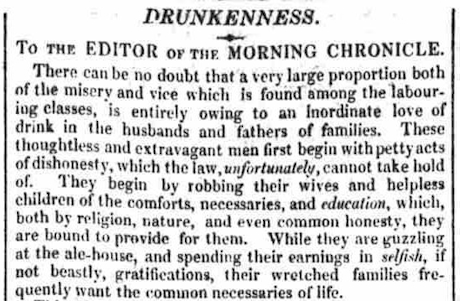
Image 5: Morning Chronicle - Tuesday, 23 September, 1834
Commander Forman concludes that: ‘if the influence of the mother should prevail-if the children, in spite of bad example, be good they must despise their own father; for, however they may wish it, it will be impossible to respect him’.
In 1834 concern at the near impossibility of supervising the increasing number of drinking establishments resulted in a House of Commons Select Committee on Intoxication Among the Labouring Classes.
The chairman of the committee James Buckingham M.P. (Sheffield) states: ‘of all the single evils that afflict our common country, the increased and increasing prevalence of drunkenness, among the labouring classes, including men, women, and children, is the greatest; that it is not only an evil of the greatest magnitude in itself, but that it is the source of a long and melancholy catalogue of other evils springing directly from its impure fountain’.
The 1834 Committee recommendations included a reduction in the number of drinking establishments, regulating licensing and promotion of alternative drinks such as tea and coffee. Brandwood (2004) states, however, that a reversal of the 1830 Beer Act was out of the question, the Whig administration being ‘mindful of the mass unrest preceding the 1832 Reform Bill, and, realising that it would be blamed for any recession attributable to abandoning free trade principles was disinclined to undo the work of its Tory predecessor’.
Consequently, in spite of amendments to the 1830 Act, it would be over thirty years before any major changes to licensing regulations would be made.
In 1869 a Tory private member’s bill resulted in the passage of The Wine and Beerhouse Act. This brought the licensing of beer houses back under the control of local justices with many beer houses being closed or purchased by breweries that changed them to fully licensed public houses.
This act effectively brought an end to the free trade in beer, which Sydney and Beatrice Webb said was to ‘mark practically the first step in the path of legislative repentance’. This is followed in 1872 by the Licensing Act which classified outlets for alcohol and gave the Justices power to determine when drink outlets should close. It also gave Justices powers to transfer licences between premises.
The Denmark Tavern
The Beer House Act of 1830 effectively allowed any rate payer to establish a beer house in their home. Consequently, these establishments were generally small, often being situated in the front room of the property.
Image 6 shows a plan of 1864 for converting a joiners' shop in Preston into a two-room beer house. For comparison, image 7 shows the architect plans from 1996 for alterations to the ground floor of 54 Brunswick Street West. The layout is similar to that depicted in image 6 keeping in mind that the ground floor originally had its own entrance and a large window at the front. At the time of this plan the ground floor was being used as a hairdresser.
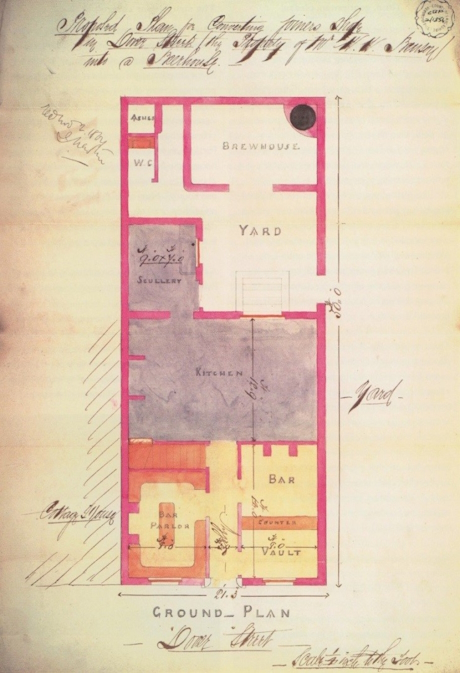
Image 6: 1864 plan for converting a joiners shop into a beer house
(c. English Heritage)
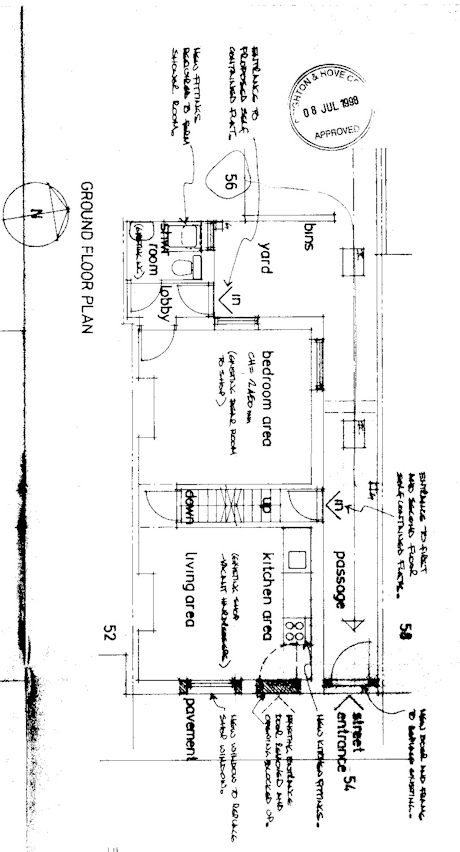
Image 7: Proposed changes to the ground floor of number 54, circa 1996
Origin of the name
Judith Middleton suggests that the name Denmark Tavern was chosen to honour Princess Alexandra of Denmark who arrived, to great celebration, at Gravesend on 7th March, 1863 (image 8).
At the age of sixteen she was chosen as the future wife of Albert Edward Prince of Wales. They married on 10th March 1863 and became King Edward VII and Queen Alexandra on the death of Queen Victoria in 1901.
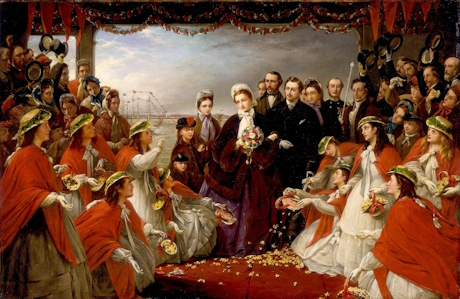
Image 8: The Landing of HRH the Princess Alexandra at Gravesend, 7th March, 1863,
© National Portrait Gallery
Another, though highly unlikely reason for the choice of name, could have been to show support to Denmark, which, in February 1864, had been invaded by Prussia in what became known as the Second Prusso-Danish War. Ending in October of that year, the war resulted in Denmark ceding territory to Prussia and Austria.
Given the location of the Denmark Tavern relative to Brunswick Square, with its Germanic connotations, this is very unlikely to have been the origin of the name.
The occupants
Number 5 Brunswick Street West appears to have been a building of multiple residents and first appears in the census of 1861, when 15 individuals, consisting of three families, are listed as living there.
John Philips, aged 42 occupation ostler, his wife Lucy, aged 48, and four daughters aged between 6 and 14. An additional family member is listed: 14-year-old John Henry Stoner, described as ‘son-in-law’ (step son). John Philips and Lucy Stoner were both previously widowed and married in 1852 after the death of their first partners; John Henry being the son of Lucy and her first husband John Stoner.
Also in the 1861 census are Janet Stonbridge aged 28, listed as 'head' and her son John, aged 3, and daughter Isabella, 2.
The Brighton Gazette reports in August 1864 that Charles Haswell, described as a builder, applied for a license for the Denmark Tavern beer shop. This application was disqualified on the grounds that he did not follow due process in not posting the application in accordance with the Act of Parliament (Image 9).
Given that this predates the 1869 Wine and Beerhouse Act it must be assumed that the application was for the sale and consumption of wine and spirits in addition to beer.
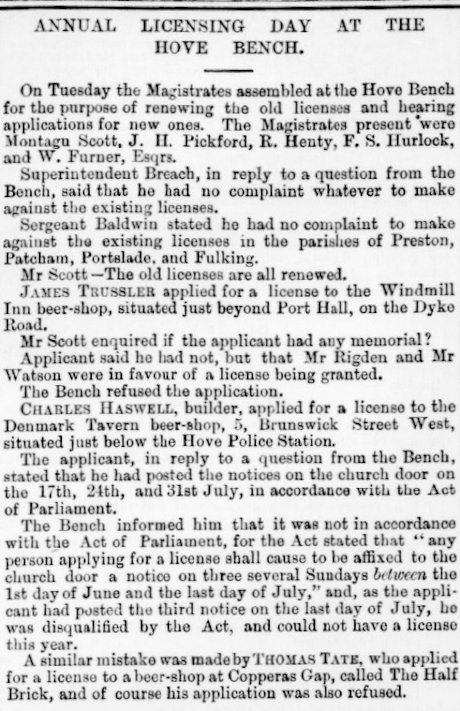
Image 9: Brighton Gazette ,25 August, 1864
There is no Charles Haswell recorded in the census for Brighton and Hove for this period, however, a Charles Haswell is listed in the 1861 and 1871 census as a bricklayer and residing in Kingston upon Hull and it is possible he was a speculative builder residing in Hove for a period of time. In 1878 he was declared bankrupt.
In the street directory for 1867 William Wenham is recorded at the Denmark Tavern. In the census for 1871 William Wenham, aged 43, is listed as a ‘beer retailer and milk carrier’ (his surname is spelt Winham in the census).
It is at this point that occupancy of number 5 is limited to one family and William is recorded as living at number 5 ‘beer house’ with his wife Martha, aged 40, sons Ration, 14, William Henry, 11, and four daughters: Alice, 8; Ann, 5; Louise, 3; and Emily, 9 months.
The register of 1869 records William Wenham as being granted a licence ‘for beer to be consumed on the premises’. He is listed at the Denmark Tavern in the street directories until 1871.
For the years 1873 and 1874 the street directories list William Wenham at the Spring Street Tavern, number 54 Upper North Street.
From 1877 the street directories place William Wenham at the Shakespeare Head, number 1 Spring Street.
The census for 1881 and 1891 also list him as a ‘beer retailer’ at the Shakespeare Head.
The last street directory entry is 1895.
In 1901 the census records that he and Martha have moved to Stenying and are ‘living on own means’.
The 1911 census lists him as a ‘retired beer retailer’ living at 8 Port Hall Place Brighton. At 83 years of age, he is living with Martha, his widowed daughter Ann and two grandchildren. His death is recorded in 1916.
On 31st July, 1871 the Register of Licenced Premises records the transfer of the licence to Thomas William Allison.
In March 1872, the Brighton Gazette reports that the licence is again transferred from Thomas William Allison to Francis French (Image 10).
In 1873 the license was altered to ‘A Specific License to sell beer…Beer to be consumed either on or off the premises’.

Image 10: Brighton Gazette 28 March 1872
On 15th March 1875, the tenure of Francis French came to an end when the licence was transferred to Charles Walters. Charles died at the age of 57, in October 1878, and the license was transferred to his widow Mary Walters on 16th December 1878. Although the license for Mary was renewed in 1879, in August 1880 the license was transferred to William Liledott or Lelliott.
The census for 1881 introduces some interesting points.
William Liledott, aged 28, is recorded as living at number 5 and his occupation is given as a bath attendant. He resides at this address with his wife Clara, aged 21, daughter Kathleen, 5, and son Walter, 4. In addition, William’s father Richard, aged 64, is listed at the address along with his wife Ann, also 64; his occupation listed as labourer.
In addition, Fred Gastors, aged 38, John Merchant, 49, a labourer, and his wife Elizabeth, 47, are also listed as living at number 5 Brunswick Street West.
Assuming that William Liledott acted as the landlord to the Denmark Tavern, his tenure was short-lived with the license being transferred to William King on 20th June 1881.
William King continued as landlord at the Denmark Tavern until 1889. In the census of 1891 William, aged 65, and his wife Mary, 55, are recorded as living at 5½ Brunswick Street West, with his occupation given as a dairy man.
The census of 1891 also shows that there was a high level of occupancy at the property. In January 1891 the license was transferred to Emily Sarah Miller, aged 40, whose occupation is listed as a beer retailer.
Her son Charles Goulding, aged 20. is also listed living at the address plus a servant Marie Beckett, 30. Seven lodgers are also listed on the 1891 census as living at number 5; these consist of four males and three females, one of whom is a child aged 6.
The license was transferred from Emily Sarah Miller in July 1891.
After only 6 months the license is transferred in July 1891 to Frederick James Ryan who holds the license until February 1894.
The final transfer, in February 1894, is to Mark Gander. The street directories between 1895 and 1897 list a Mrs Gander living at number 5 Brunswick Street West.
The final time the Denmark Tavern is listed in the street directories is 1897 and appears as number 5 Brunswick Street West from 1899. This coincides with a sale by auction of properties following the death of E.W Robins, in 1894 (Image 11).
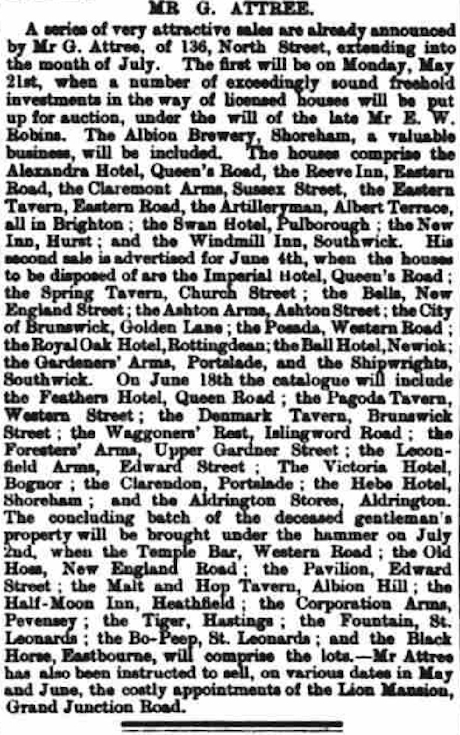
Image 11: Brighton Gazette, April 12, 1894
The brewery of Robins & Son was established in 1789.
They founded the Anchor Brewery in Waterloo Street but it is not clear when they took over the Denmark Tavern. It is clear, however, that upon the death of E.W. Robins the sale of the Denmark Tavern as a licensed business was unsuccessful and the building would ultimately be put to other uses.
Number 5½
To the rear of number 5 Brunswick Street West was a small building, described as an ‘outbuilding’ in the 1871 census.
When the street numbers were changed in 1925 this building became number 56. This number no longer exists in the street numbers of Brunswick Street West.
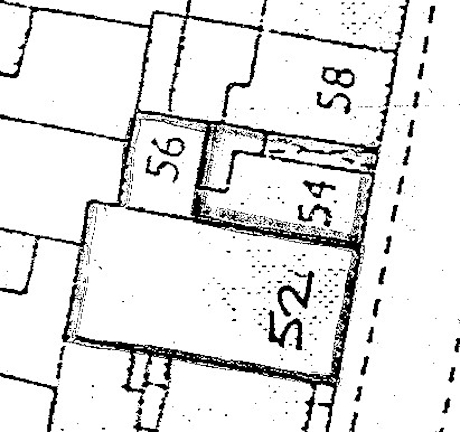
Image 12: Plan of numbers 54 and 56 Brunswick Street West
Number 5½ was accessed via the passage which ran at street level along the north side of the building which also gave access to the upper levels of number 5. This led into a small courtyard from which number 5½ could be entered with censuses and street directories indicating that it was used for residential purposes. Refer to images 2 and 12.
In the census of 1861, the family of Abel Batchelor, aged 42, and 5 family members are recorded living at number 5½. These included his wife Mary Ann, 42, daughter-in-law Sarah Wilson, 18, and Mary Wilson, 15, and sons-in-law William Wilson, 12 and Harry Wilson, 8.
In 1857, Abel Batchelor, widower, married Mary Ann Wilson, widow, in St Nicholas Church, Brighton.
Abel’s occupation is listed as ‘Fly Man’. In 1871 Abel, Mary and William are recorded as living in Cannon Street, Brighton. In the census of 1881 Abel is once again listed as a widower, sadly this time he is recorded as ‘pauper’ residing at Race Hill Workhouse, Brighton. Abel died aged 65, in 1883.
In the 1871 census, three people George (William) Neaves, aged 28, his wife Louisa, 27, and Edwin Boyles, 6, (a nephew of Louisa, whose maiden name was Boyles), are listed as living at number 5½, with George’s occupation listed as groom.
In the 1881 census, George (listed as William) and Louisa are residing at number 3 Lansdowne Street with George employed as 'hotel servant'. They are living at the same address in 1891 with the addition of a daughter Laura aged 10, niece Margaret Day, 12, and boarder George Bundge, 33, a wine and spirits salesman; George is listed as ‘hotel porter’.
In 1911 they are recorded as living at number 6 Lansdowne Street, but George is now listed as an 'out of work brewers labourer'. Louisa is recorded as dying in 1915, George in 1925.
The census of 1881 lists six people residing in number 5½: William Phillips, aged 29, a stableman; his wife Margaret, 30; son Albert, 6; and daughters Emma, 8; Daisey, 2; and Victor, 6 months; besides the masculine named Victor is also listed as 'scholar'.
In 1891 the family are recorded as living at 11 Jubilee Street, Brighton. This time Victor is listed as son and there is a discrepancy in the ages of the four children compared with the 1881 census. In 1891 they are listed as: Victor 16, Albert 12, Emma 18 and Daisy 10. William’s occupation is now given as Cabman Groom.
In 1901 William and Margaret are listed as living at number 49 Jubilee Street. In 1911 William is recorded as widower living on his own in one room at 6 Ellen Street with his occupation given as cab driver.
In the 1901 census neither the Denmark Tavern nor 5½ are listed, the property being recorded only as number 5.
A total of 10 individuals, composed of 2 families, are listed residing at the address (this total includes two visitors). The first family is that of Christopher Newman, aged 31, a housepainter; his wife Bessie, 32; and 3 children: Christopher, 8, Kathleen, 6, and Irene, 1.
The second family is that of Charles Leggett, aged 56, bootmaker; his wife Amelia, 47; and stepson William Carlton, 16.
The street directory for 1905 lists an E. Billingsley, bootmaker living at number 5, with the trade section of the directory listing his business at 8 Western Street and 5 Brunswick Street West.
From Beer house to Hairdressers
In 1911 both buildings are recorded in the census.
Number 5½ is occupied by Harry Thomas Richards, aged 38, dairy foreman; his wife Jane, 38; daughters Elizabeth Lilian,16, drapers shop assistant, and Constance Phyllis,10.
Number 5 lists only two occupants, Arthur Gillam, aged 27, and his wife Ellen Mary, 30. Arthur’s occupation is given as hairdresser. The street directories list Arthur Gillam, hairdresser at number 5 Brunswick Street West until 1919.
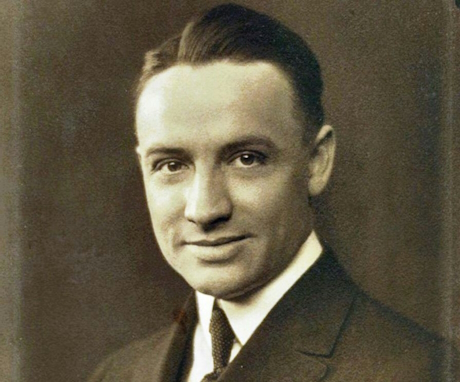
Image 13: Men's hairstyle, 1911
Number 5 (number 54 from 1925) continued as a hairdresser with Horace V Gilbert listed in the street directories from 1920 until 1938.
In the 1939 Register, Horace, aged 59, and his wife Henrietta are listed at number 54 Brunswick Street West, a ‘Gentleman’s Hairdressers’.
Between 1947 and 1960 the street directories list the occupant of number 54 as Frederick Mills, although no occupation is listed in either the street or trade sections of the directories.
1964, and the focus of the hairdressing business has changed, with Rita Hair Fashions Ladies Hairdresser listed; in 1970 this has changed to Audrey Hair Fashions Ladies Hairdresser.
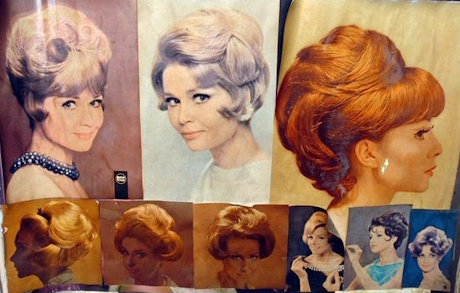
Image 14: Ladies' hairstyles, 1960s
In image 7, the plan of proposed changes from 1998 records the front room of the ground floor as ‘existing room - vacant hairdressers’.
Conclusion
Confusion has previously surrounded the exact location of the Denmark Tavern, but it is safe to say that it was located in the building now numbered 54 Brunswick Street West.
The Denmark Tavern had a relatively short life as a licensed premise and saw the license transferred between different individuals. One interesting point to emerge is the varied occupations held by the licensees, both before and after their time at the Denmark Tavern.
Numbers 5 and 5½ both acted as residential accommodation to a number of individuals and families.
The ground floor of number 54 took on a new purpose to become a gents then ladies hairdressers. Number 56 no longer exists and number 54 is currently private accommodation.
Research by Thomas Aird (June 2023)
Return to Brunswick Street West page
For information on how to join us as a research volunteer visit this page.


